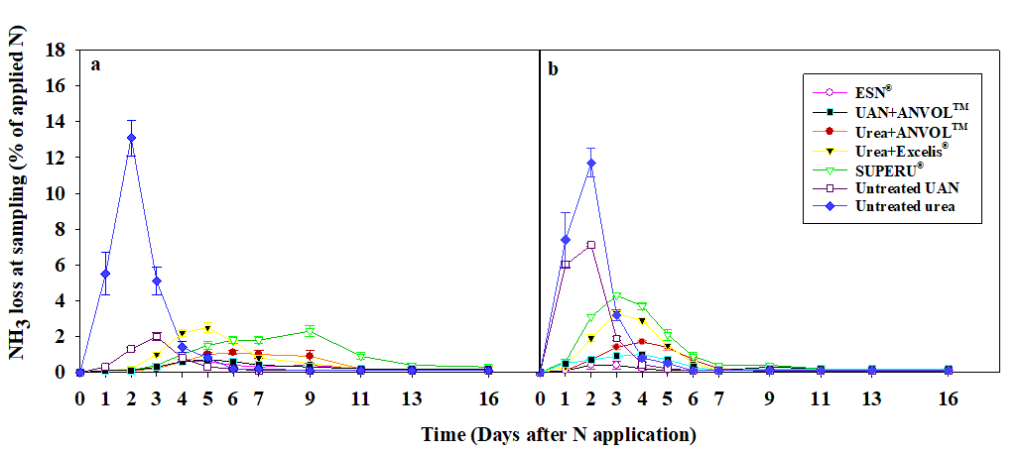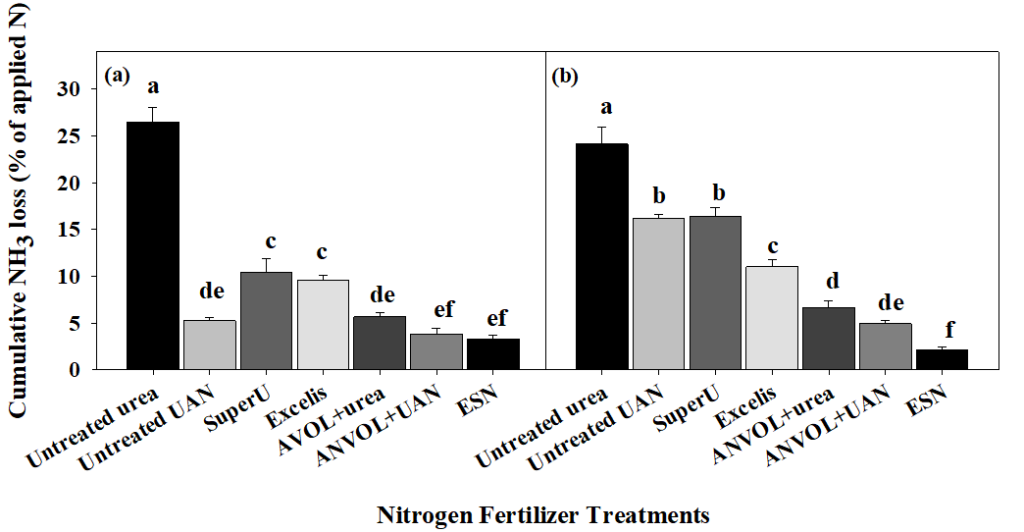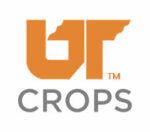Ammonia Loss from Unincorporated, Surface-applied Enhanced Efficiency Nitrogen Fertilizer
Research Funded by the Tennessee Soybean Promotion Board
Nutifafa Adotey, Assistant Professor and Soil and Nutrient Specialist, Samuel Okai, Graduate Students, Xinhua (Frank) Yin, Professor & Cropping System Scientist, Daniel Yoder, Professor, Lori Duncan, Assistant Professor and Row Crop Sustainability Specialist, Debasish Saha, Assistant Professor and Soil Scientist
Introduction
Ammonia volatilization from urea and Urea ammonium nitrate is recognized as one of the most common and relevant losses of nitrogen (N) in cropping systems, especially in no-till production since these fertilizers are surface-applied and unincorporated. Nitrogen loss reduces application efficiency, results in economic loss and potential environmental problems. Several strategies have been studied to minimize ammonia loss from urea, including the use of enhanced efficiency nitrogen fertilizers. Enhanced efficiency nitrogen fertilizers are modified forms of urea or UAN either by chemically or physically coating. Detailed information on EENF is available at https://utia.tennessee.edu/publications/wp-content/uploads/sites/269/2023/10/PB1888.pdf. Enhanced efficiency N fertilizer products can optimize nutrient uptake, improves crop yield, improves profitability, and reduces environmental risks. There are myriad EENF products available on the market with varying concentrations of active ingredients or formulation and UTIA’s Soil Specialist and Scientist often receive calls about the efficacy of new enhanced efficiency fertilizers. However, evaluation of multiple products in a replicated unbiased field research is very expensive and restricted to the growing season. Furthermore, research findings suggest that the efficacy of some N stabilizers may be limited by soil type and properties. Identifying a cost effective EENF for soils in TN may optimize N uptake and reduce N loss. It is necessary to pinpoint areas susceptible to ammonia volatilization and identify products that work best for soils in Tennessee to minimize N pollution.
Research Methodology
A laboratory study was carried out to evaluate the efficacy of five EENF on ammonia volatilization applied onto the surface of 2 soils collected from producer fields. The experiment was evaluated using a precise in-lab environment-controlled system (picture below). To initiate the volatility study, the glass chambers were filled with 500 g of air‐dried soil and moistened to two‐thirds field capacity of each soil. The moistened soil is then incubated at a constant temperature of 26°C for 48 h prior to fertilizer application. At the end of incubation, N fertilizer was surface applied at an equivalent rate of 120 lbs. N a–1 based on the exposed soil surface area within the glass chambers. Ammonia from N fertilizer and soil were captured in 100 mL of 0.02 M orthophosphoric acid on 1, 2, 3, 4, 5, 6, 7, 9, 11, 13, and 16 days after fertilizer application.



Findings
The EENF forms were effective in delaying and reducing peak ammonia flux compared to their corresponding non-EENF forms. Ammonia loss for the EENF treatments ranged from 0.1% to 2.5% of applied N in Loring, and from 0.1% to 4.3% in Grenada during the first 7 DAF (Figure 1 a & b). Cumulative ammonia loss for untreated urea was 24.1% and 26.5% of applied N in Grenada and Loring soils, respectively, which were higher than the losses from all other N treatments in the corresponding soils (Figure 2). Cumulative ammonia losses from untreated UAN applied on Grenada soil was comparable to those from SUPERU® on the same soils but higher than untreated UAN applied onto the Loring soil and the remaining EENFs. All the EENF were effective in reducing ammonia loss compared to the corresponding untreated or non-EENF forms in both soils. In Loring soil, moderate to high reduction in ammonia loss was observed from EENF (61-88%) with the exception of UAN treated with ANVOLTM (Table 3). However, it’s important to consider that the amount of ammonia loss from untreated UAN suggests the soil is not very susceptible to ammonia loss. In Grenada soil, moderate to high reduction in ammonia loss was observed from EENF (54-91%) with the exception of SUPERU®.



Conclusion
In this study, amending urea and UAN with NBPT, DCD, or polymer coatings delayed the onset and reduced the peak of ammonia volatilization, thereby decreasing cumulative ammonia loss. Notably, the slow-release fertilizer ESN® was more effective than NBPT in minimizing ammonia loss. Additionally, urea treated with NBPT alone (urea+ANVOLTM) was more efficient at inhibiting ammonia losses than when urea was amended with both NBPT and DCD (SUPERU® and urea+Excelis®). The efficacy of EENF products is influenced by soil properties such as pH, which can dictate the magnitude of ammonia volatilization losses, especially urea ammonium nitrate.





